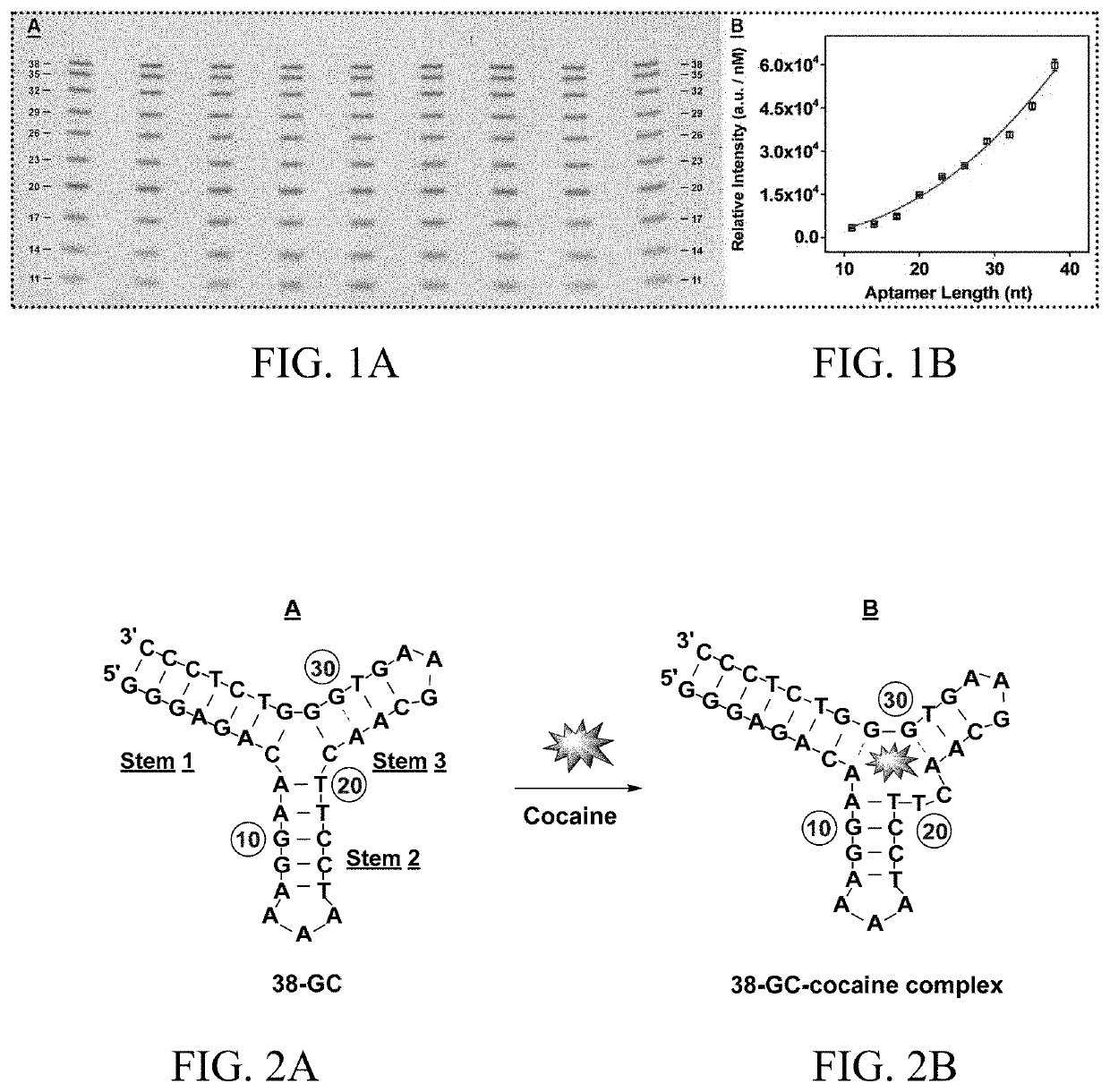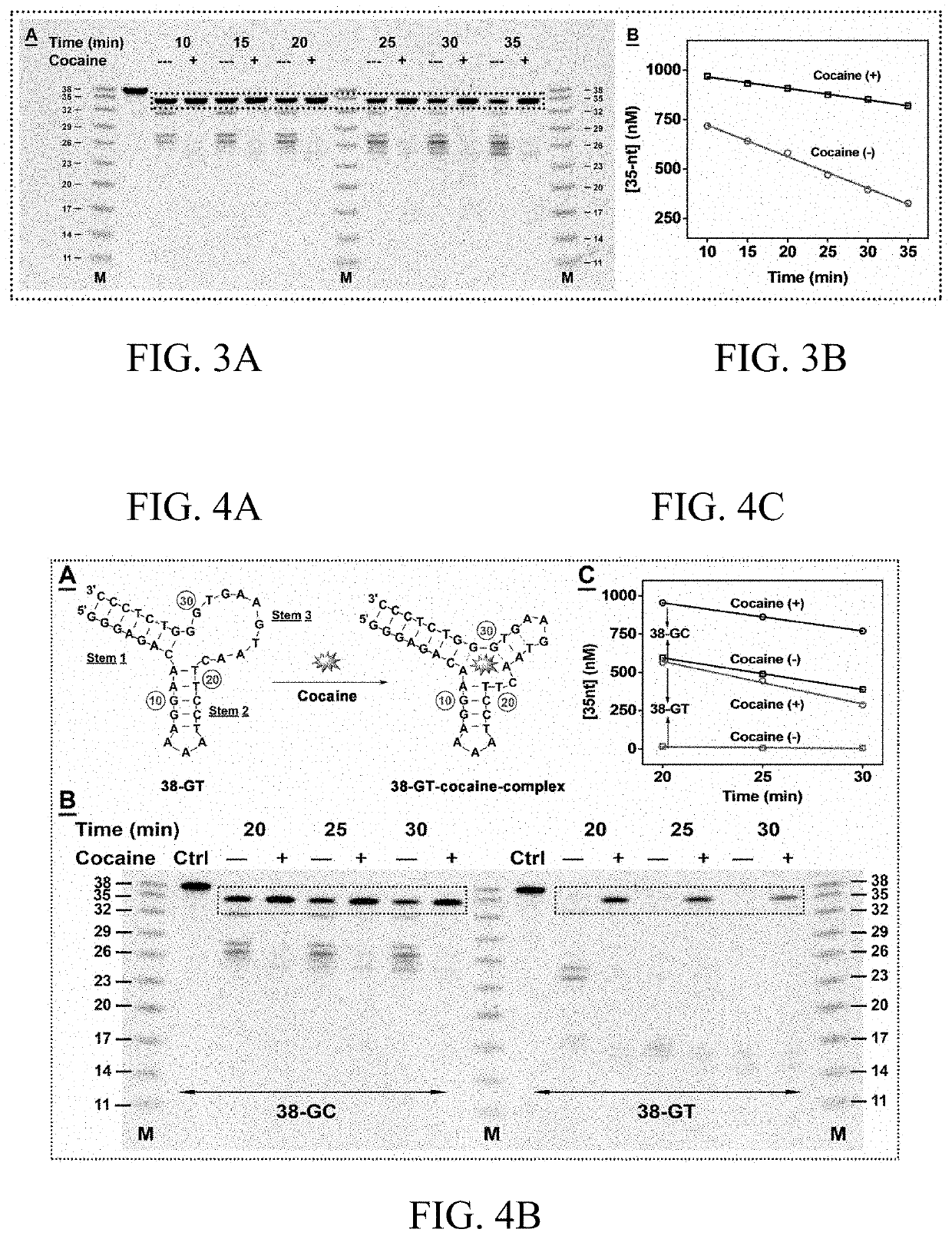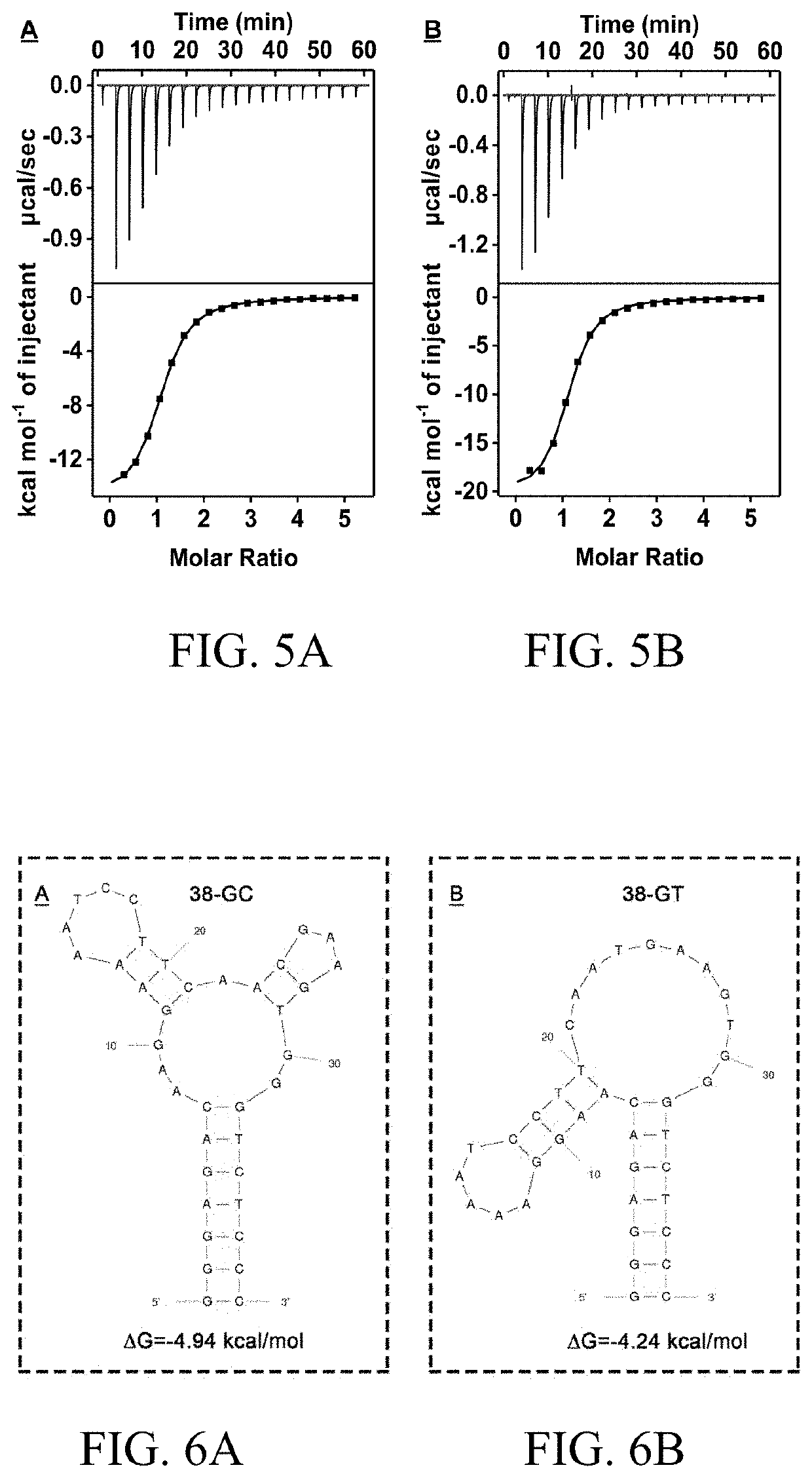Methods for generating structure-switching aptamers and uses thereof
a technology of aptamer and structure, applied in the field of biosensors, can solve the problems of difficult to generate measurable signals at target concentrations more than 100-, time-consuming methods, complex sample preparation,
- Summary
- Abstract
- Description
- Claims
- Application Information
AI Technical Summary
Benefits of technology
Problems solved by technology
Method used
Image
Examples
example 1
n of Exo III Digestion of a Cocaine-Binding Aptamer Upon Target Binding
[0239]The binding of small molecules to the grooves of double-stranded DNA can modulate the activity of nucleases. The Exo III-mediated digestion of fully folded aptamers is likewise inhibited by the binding of their small-molecule targets. This is demonstrated using a recently-derived aptamer (38-GC) that binds cocaine with micromolar affinity. 38-GC contains a TWJ-structured binding domain and remains predominantly folded even in the absence of target due to the seven Watson-Crick base-pairs in stem 1 (FIG. 2A). Upon binding cocaine, 38-GC undergoes a minor conformational change, which relocates a few nucleotides within its TWJ binding domain. Specifically, the A8-T20 base-pair in stem 2 and the C21-G31 base-pair in stem 3 are disrupted to form a T20-C21 dinucleotide bulge and an A8-G31 mismatch in the junction (FIG. 2B).
[0240]The substrate-recognition site of Exo III is located 1 nm away from its catalytic cen...
example 2
TWJ Structure on Exo III Activity
[0242]To better elucidate the mechanism of Exo III inhibition, 38-GT, a variant of 38-GC, was engineered, in which the matched C24-G28 base-pair was replaced with a T24-G28 wobble pair (FIG. 4A). Isothermal titration calorimetry (ITC) experiments demonstrated that 38-GT binds to cocaine with a similar affinity (KD=1.6±0.2 μM) to 38-GC (KD=2.0±0.1 μM) under the same experimental conditions (FIG. 5). However, stem 3 of 38-GT is less thermally stable compared to 38-GC, and Mfold predicts that this stem predominantly exists in a single-stranded form under the experimental condition (FIG. 6).
[0243]To determine how the TWJ structure affects Exo III digestion, 38-GC and 38-GT were digested under the same experimental conditions with and without cocaine. In the absence of cocaine, 38-GT was completely digested into several short products around 16 nt in length, indicating that the single-stranded stem 3 was digested by Exo III. As expected, high concentratio...
example 3
Mutations within the Binding Domain of 38-GT on Exo III Activity
[0244]To further confirm that target binding to the aptamer is essential to the inhibition of Exo III digestion, a set of point mutants derived from 38-GT was designed. Two adjacent base-pairs (A8-G31 and A22-G30) and a dinucleotide bulge (T20 and C21) within the binding domain are crucial contributors to the aptamer's binding affinity for cocaine. Mutations at these positions should profoundly alter binding affinity. Four 38-GT mutants were generated, in which the thymine at position 20 was replaced with a cytosine (38-GT-20C) or adenine (38-GT-20A), or the adenine at position 22 was replaced with a guanine (38-GT-22G) or thymine (38-GT-22T). These four point mutants would predominately fold in the absence of cocaine, but with impaired target-binding affinity.
[0245]The ITC results confirmed that these mutations prevent cocaine binding (FIG. 7). Exo III digestion of 38-GT and these four mutants were subsequently perform...
PUM
 Login to View More
Login to View More Abstract
Description
Claims
Application Information
 Login to View More
Login to View More - R&D
- Intellectual Property
- Life Sciences
- Materials
- Tech Scout
- Unparalleled Data Quality
- Higher Quality Content
- 60% Fewer Hallucinations
Browse by: Latest US Patents, China's latest patents, Technical Efficacy Thesaurus, Application Domain, Technology Topic, Popular Technical Reports.
© 2025 PatSnap. All rights reserved.Legal|Privacy policy|Modern Slavery Act Transparency Statement|Sitemap|About US| Contact US: help@patsnap.com



